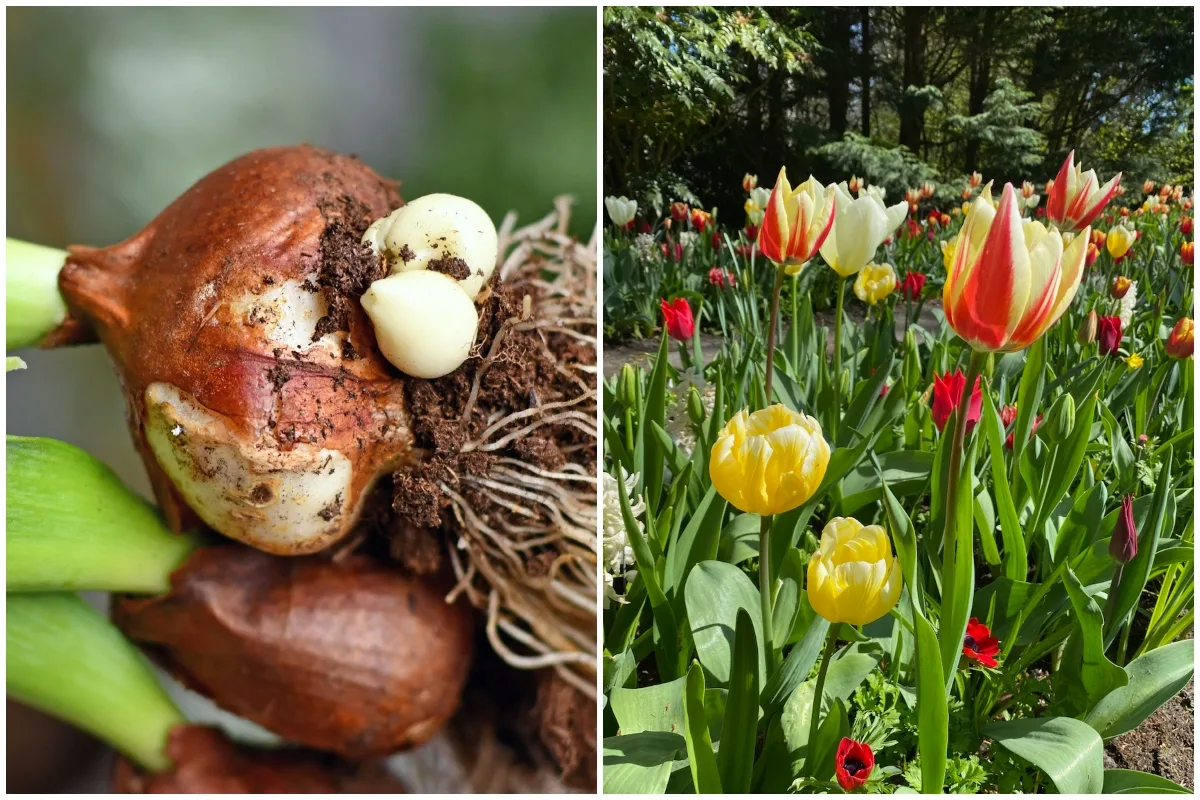
Planting tulip bulbs is one of those garden jobs that I would rather skip. Don’t get me wrong, I absolutely love having tulips blooming all over my garden in spring. But with this November predicted to be cold, blustery and gray in my neck of the woods, I could do without having to get soaked planting tulips.
Wouldn’t it be great if I could still have a garden full of tulips without having to plant them every year?
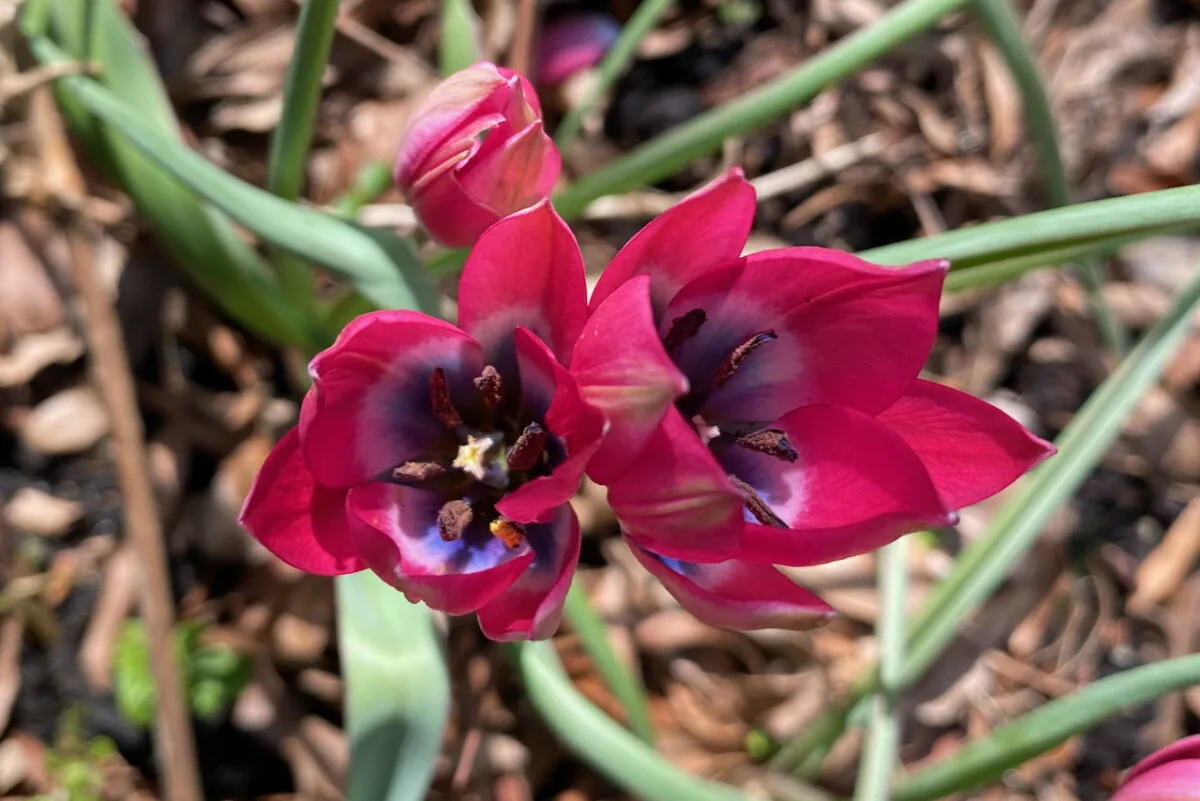
Actually, I can. And I’m slowly starting to add more tulips that naturalize to my own bulb patch. Not only will I save money in the long run (not having to buy new bulbs every fall), but I’ll also save time and free up ‘gardening mental bandwidth’ (no doubt to devote to propagating even more plants in the fall).
What does naturalizing tulips even mean?
Naturalizing a tulip (or any type of bulb) means that you only need to plant it once. The bulb will divide underground and reliably rebloom every year without us, gardeners, needing to repurchase and replant it.
Another term that you’ll often see used is perennializing. And a cheekier version I’ve also seen is boomerang bulbs. The idea is the same – you plant them once and they come back every year.
Can I naturalize any type of tulip?
I wish! Unfortunately, not all tulips will naturalize well, if at all. A good rule of thumb to keep in mind is that the closer the tulip is to its natural, wild state, the easier it will be to perennialize it. Because in nature, wild tulips perennialize themselves, both by bulb splitting and self-seeding.
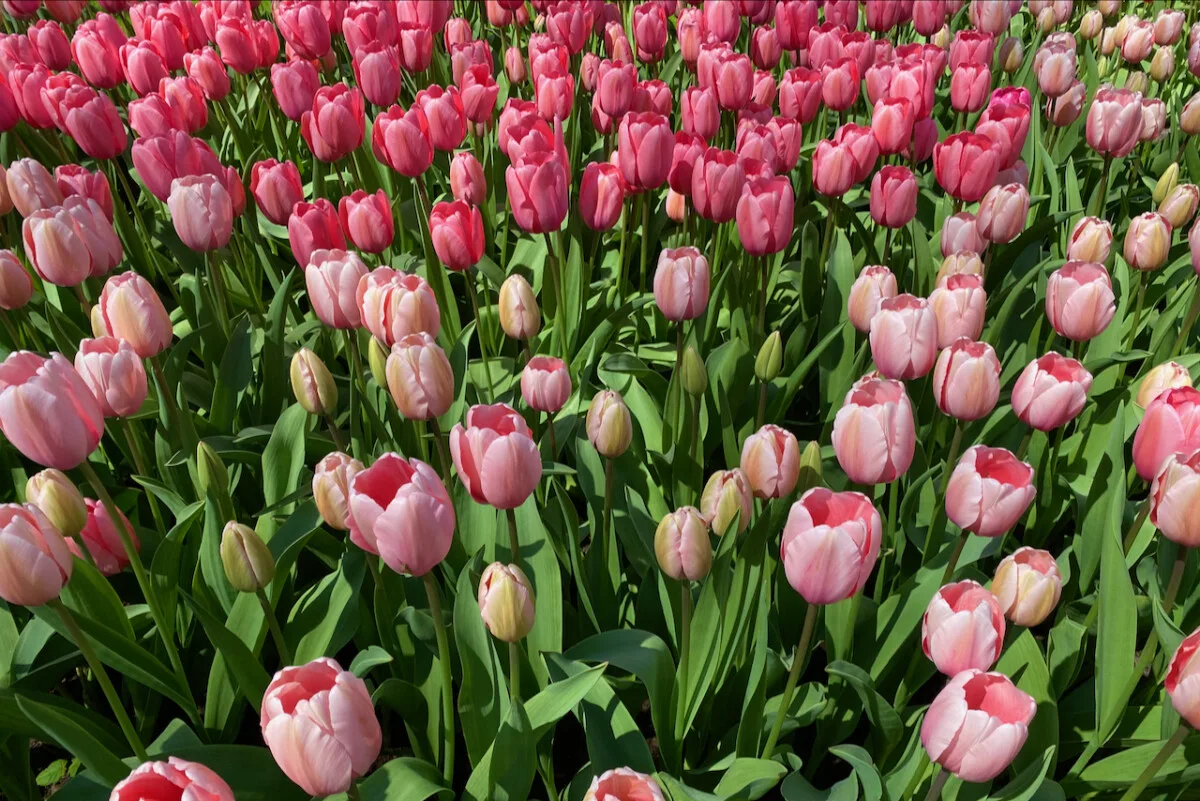
On the other hand, tulips that have been hybridized to have big, beautiful, colorful blooms and intricate petal patterns, will not perennialize well. That doesn’t mean that they won’t rebloom next year. They might. But the blooms will be smaller, less showy and less reliable. Remember that to naturalize means to rebloom reliably. Not just as a one-off occurrence.
How do I know if a tulip I’m buying will naturalize?
If you’re buying your bulbs from a vendor or a catalog, look for this verbiage: “naturalizes well” or “suitable for naturalizing/perennializing” or something similar that will indicate the bulbs will come back every spring. Similarly, if you’re buying in stores, look for this text on the bag.
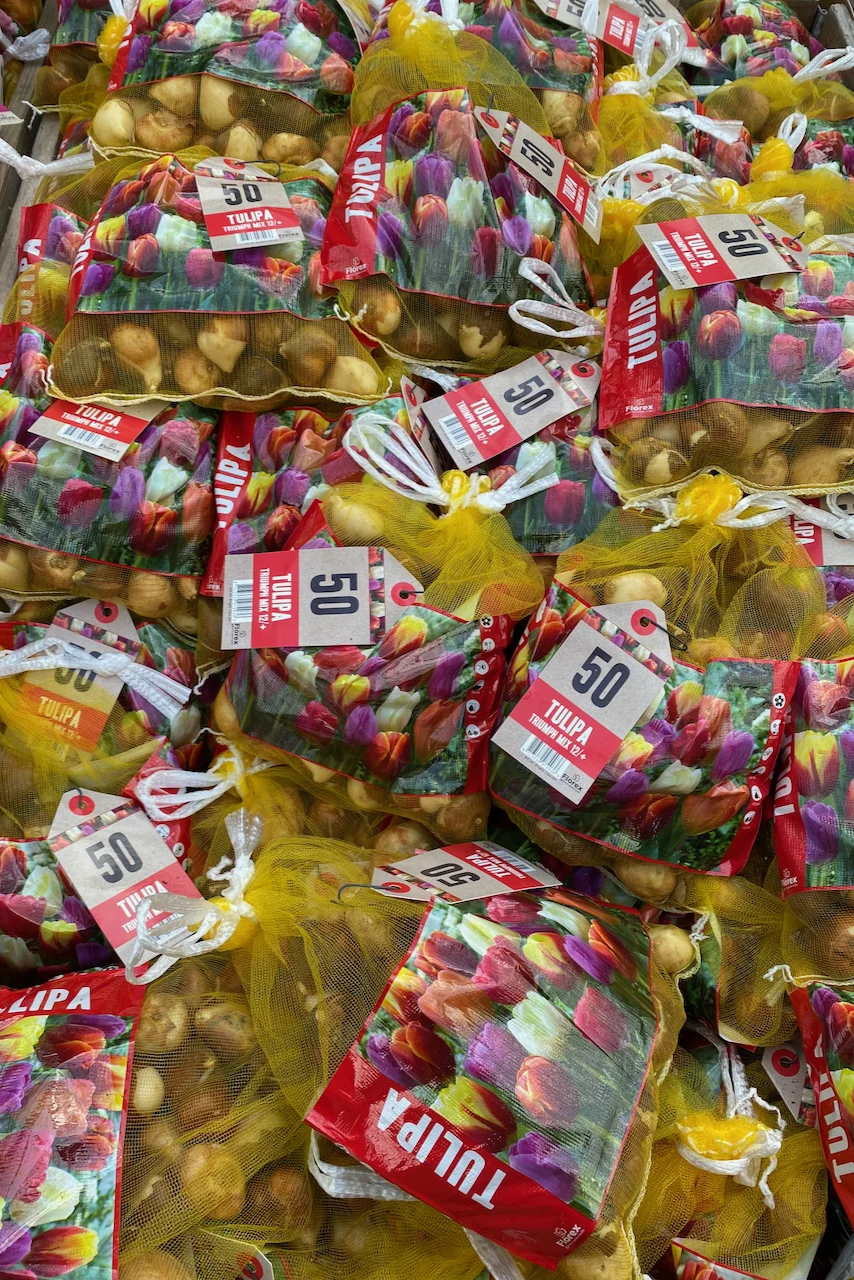
Another way is to look for information on what group the tulip belongs to. I’ve written an extensive guide on all 15 (yes, fifteen!) groups of tulips in this article. So I’ll only cover the groups that naturalize well in this post.
1. Species tulips (also known as botanical tulips)
Popular botanical tulips include:
- Tulipa praestans
- Tulipa tarda
- Tulipa turkestanica
- ‘Lady Jane’
- ‘Eastern Star’
- ‘Lilac Wonder’
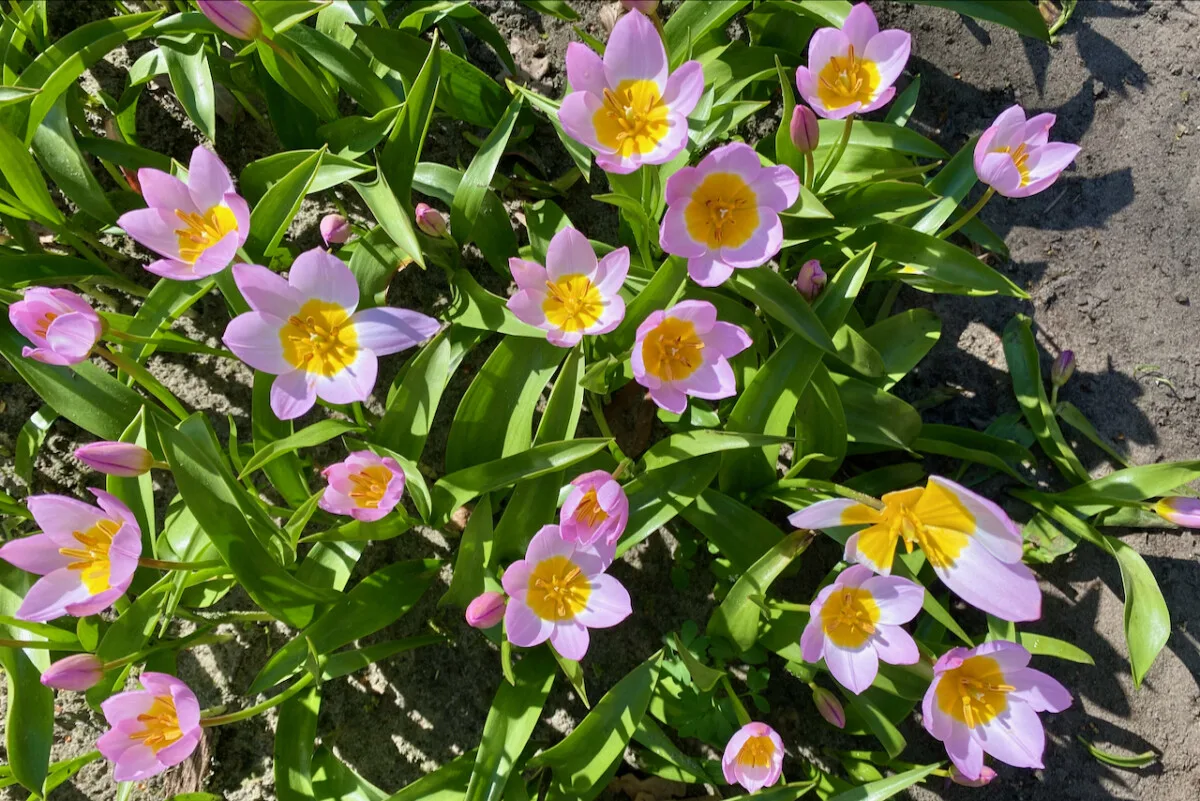
Nowadays, these are the closest bulbs you can get to the wild tulips of Central Asia. Don’t be discouraged by their petite stature. Species tulips are hardy and easy to grow. Just plant them once and they’ll keep coming back in greater numbers every year.
In addition to planting them in the ground, I’ve also used botanical tulips in container arrangements. I leave them in large pots all year long and they pop up their heads every spring. But keep in mind that in order for the bulbs to split, the tulips need plenty of room underground.
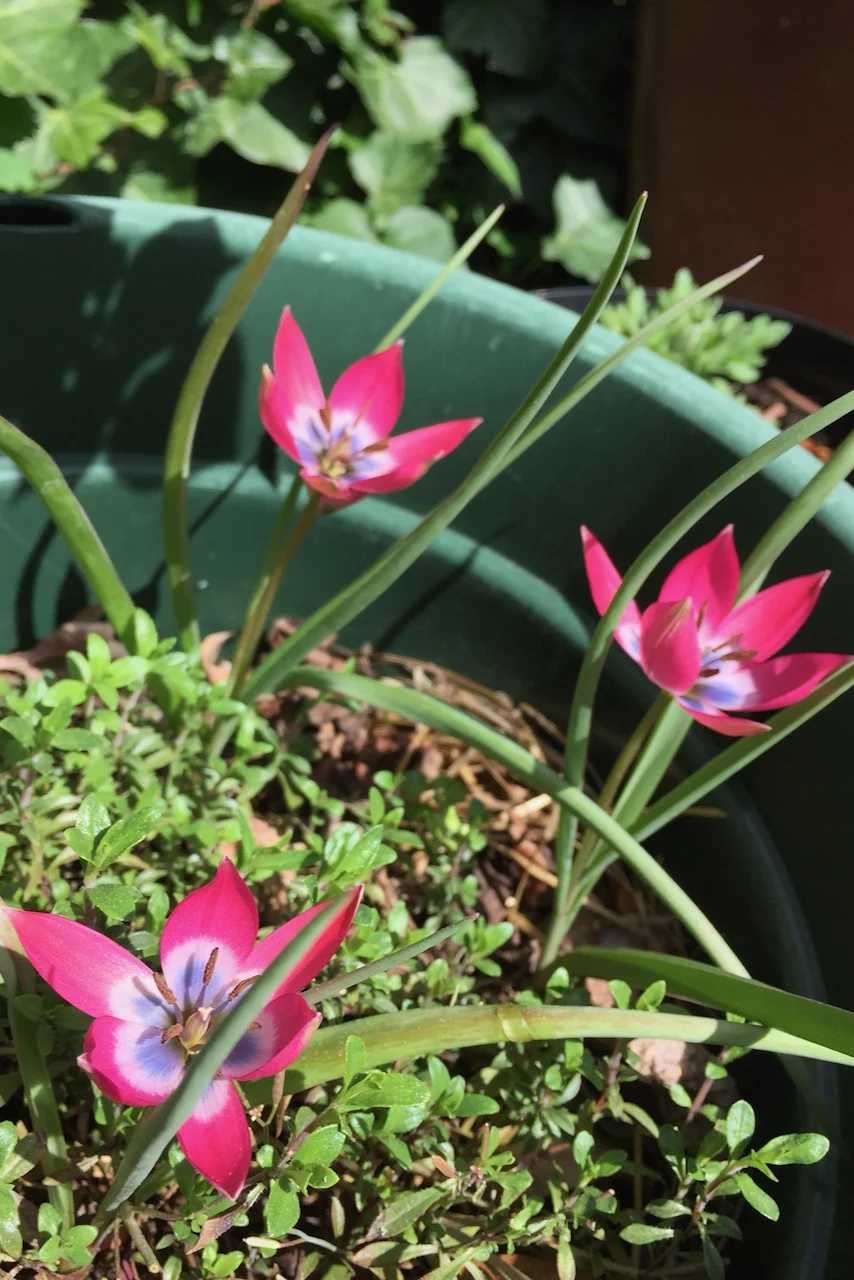
So if you do keep them in containers, make sure that the bulbs are not too crowded and that the containers don’t stay too soggy during the non-flowering months. I keep my containers under the canopy of my climbing hydrangea.
2. Greigii tulips
Popular cultivars include:
- ‘Rob Verlinden’
- ‘Toronto’ and ‘Quebec’
- ‘Fire of Love’
- ‘Cape Cod’
- ‘Red Riding Hood’
- ‘Captein’s Favorite’
- ‘Grand Prestige’
Tulips in the Greigii group have been around since the 1870s. You’ll recognize them by their double-petal pattern, with the three inner petals surrounded by three outer petals. Another distinctive mark is their foliage which often has a marble-like variegation in different shades of purple or maroon. Their stem is on the short side, so you can plant them at the front of the border or in containers.
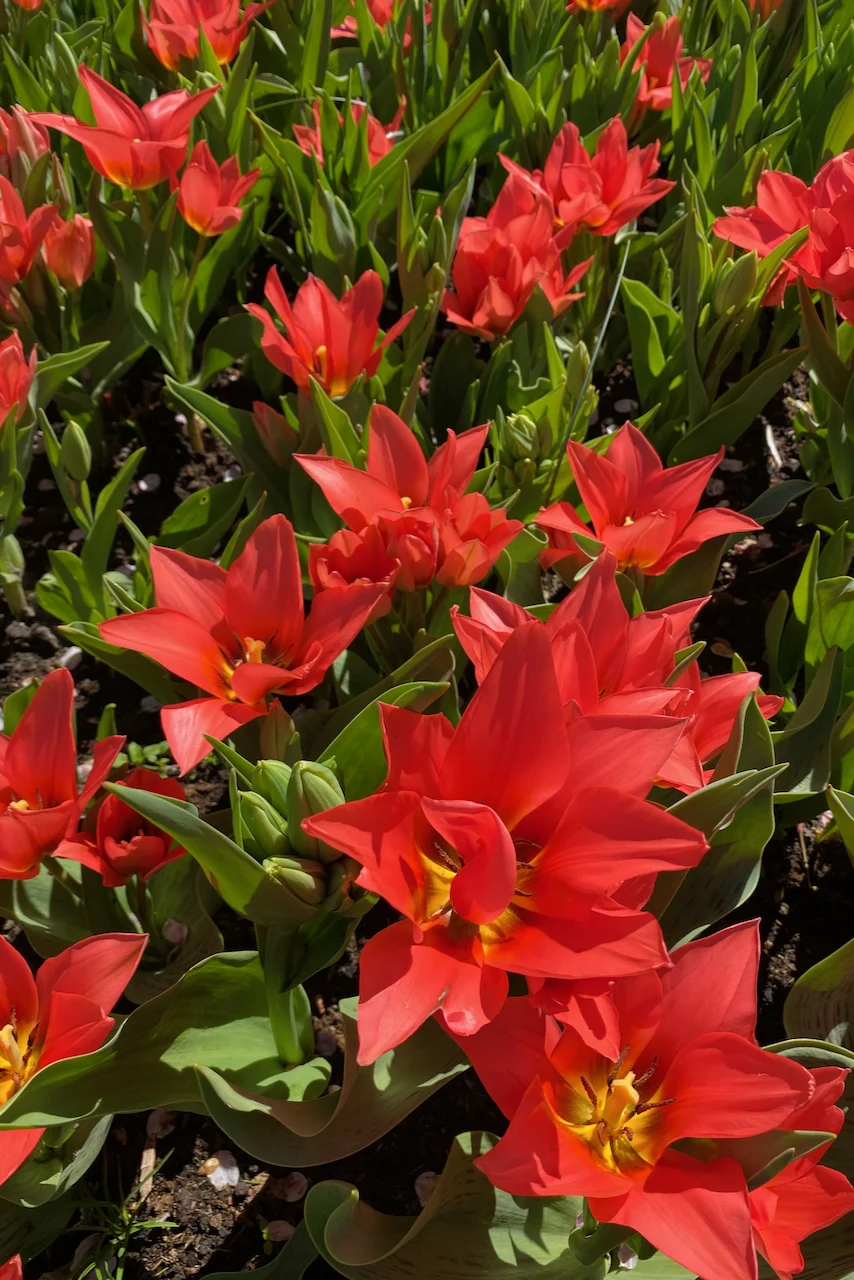
Greigii tulips are some of the earliest blooming tulips, with flowers starting to open up in early spring. Just deadhead them once the flower has faded and leave the foliage in place to continue to feed the bulbs.
3. Fosteriana tulips
Popular Fosteriana cultivars include:
- The ‘Emperor’ series
- ‘Sweetheart’
- The ‘Purissima’ series
- ‘Easter Parade’
- ‘Zombie’
- ‘Orange Glow’
- ‘Juan Flamed’
Fosteriana tulips have also been around for a while. They were introduced into cultivation in the early 1900s. They are a direct descendant of botanical tulips (that can still be found in the wild in Central Asia), so that’s why they’re also a good choice for perennializing. And since they are such an old cultivar, they’ve also been hybridized further into Darwin Hybrid tulips.
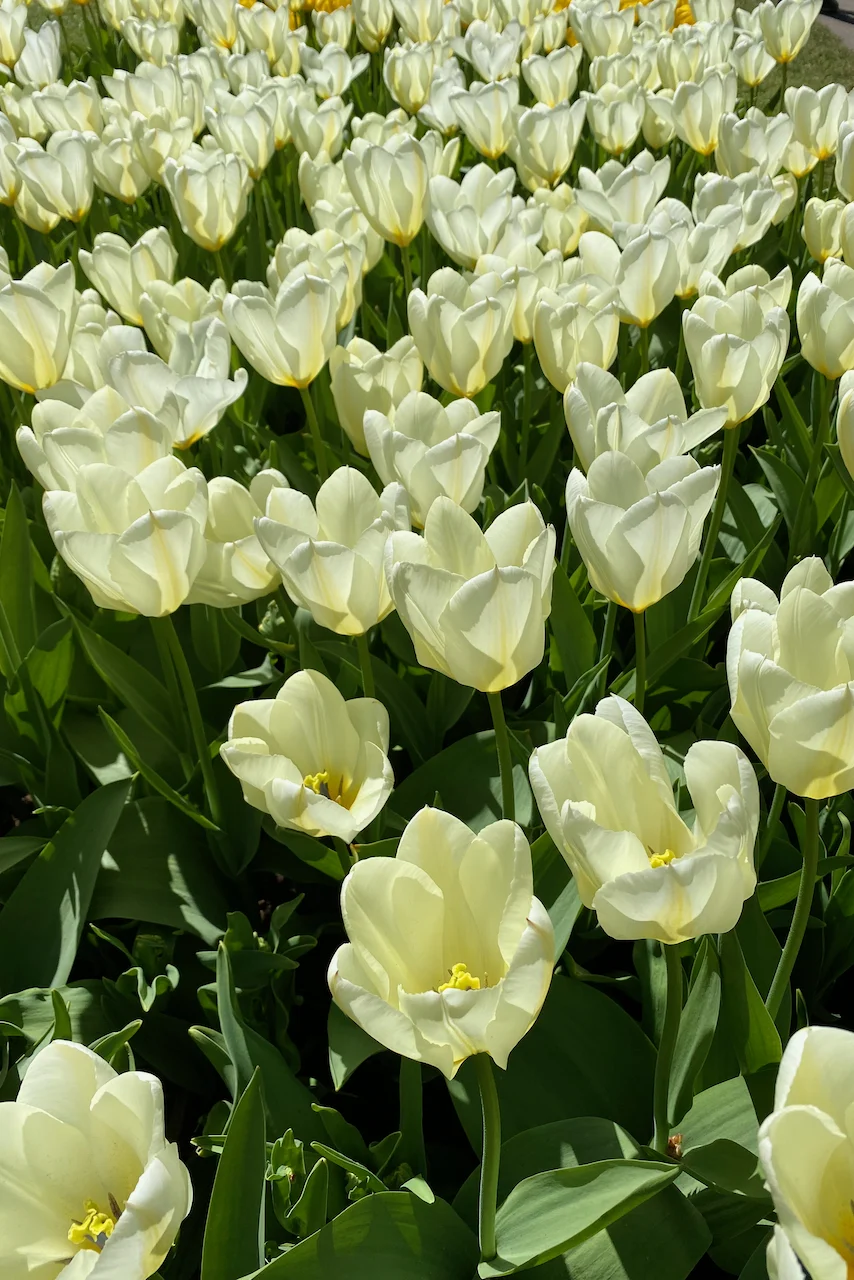
To me, Fosteriana tulips are what I remember growing up with. And I think I’ll always associate the “yellow eye” in the middle of these flowers with “real tulips.” The flowers usually come in warm colors such as red, orange and yellow. The Fosteriana leaves are usually wide and thick and sometimes glossy.
4. Kaufmanniana tulips (also known as ‘waterlily tulips’)
Popular Kaufmanniana cultivars include:
- The classical music series (‘Giuseppe Verdi’, ‘Johan Strauss’, ‘Chopin’ ‘Partitura’ and ‘Concerto’)
- ‘Show Winner’,
- ‘Early Harvest’,
- ‘Johan Cruyff’
- ‘Heart’s Delight’
- ‘Ancilla’
- ‘Scarlet Baby’
The Kaufmanniana tulips are dainty little flowers (as short as species tulips) with petals resembling those of waterlilies. Though it’s worth mentioning that waterlily tulips are not the same as lily tulips. (Lily-flowered tulips are a different group altogether.)
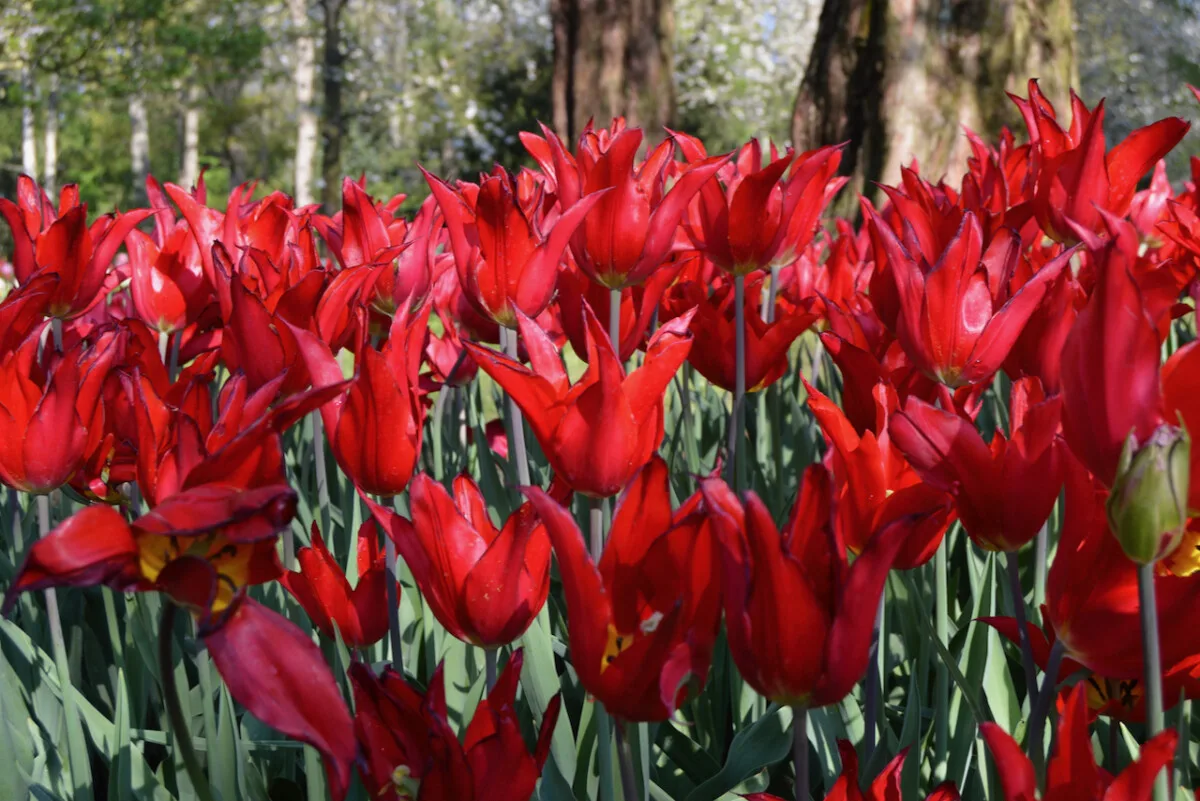
Just like the Greigii tulips, Kaufmanniana tulips are also a very old group, having been introduced into cultivation in the 1870s.
In early spring, the star-shaped flowers of the Kaufmanniana tulips open up to reveal a yellow eye in the center. That’s why some gardeners, myself included, lovingly call them “poached egg tulips.”
5. Darwin Hybrid tulips
Popular cultivars include:
- The ‘Impression’ series
- ‘Apeldoorn’
- ‘Big Chief’
- ‘Orange van Eijk’
- ‘Daydream’
- ‘Capri’
- ‘Oxford Wonder’
- ‘Golden Parade’
- ‘Tequila Sunrise’
- ‘Akebono’
Close your eyes and imagine the classic tulip shape. You’re probably thinking of a Darwin hybrid tulip. If you read “hybrid” and start thinking that these tulips might not naturalize well, let me assure you that they will. Darwin hybrid tulips are an older hybrid (from the 1950s) that resulted from crossing Fosteriana tulips with old Darwin tulips.
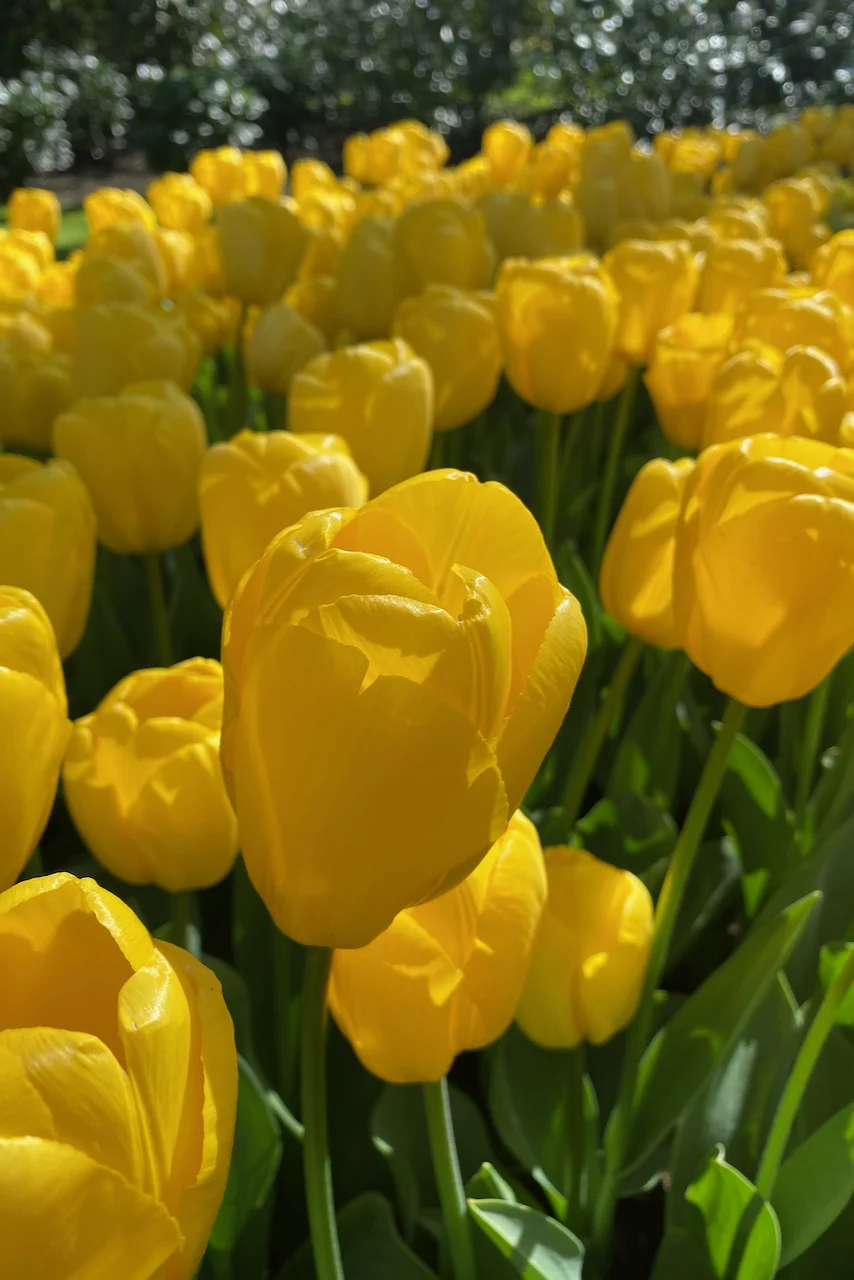
You’ll recognize them by their tall stems (some reaching 22 inches – 55 centimeters) topped with large blooms that open widely in the sun. Darwin tulips are often what we get when we buy a bouquet of cut flowers.
What tulips should I avoid if I want to naturalize bulbs in my garden?
It would be impossible to name every tulip cultivar that doesn’t naturalize well. So, again, I’ll do it by tulip group. But as a general (very general) rule of thumb, the more spectacular and unique a tulip cultivar looks, the more likely it is that it will only bloom once. Maaaaaybe, if your garden has just the right conditions, it may flower again the following year. But it will certainly not be as stunning a display.
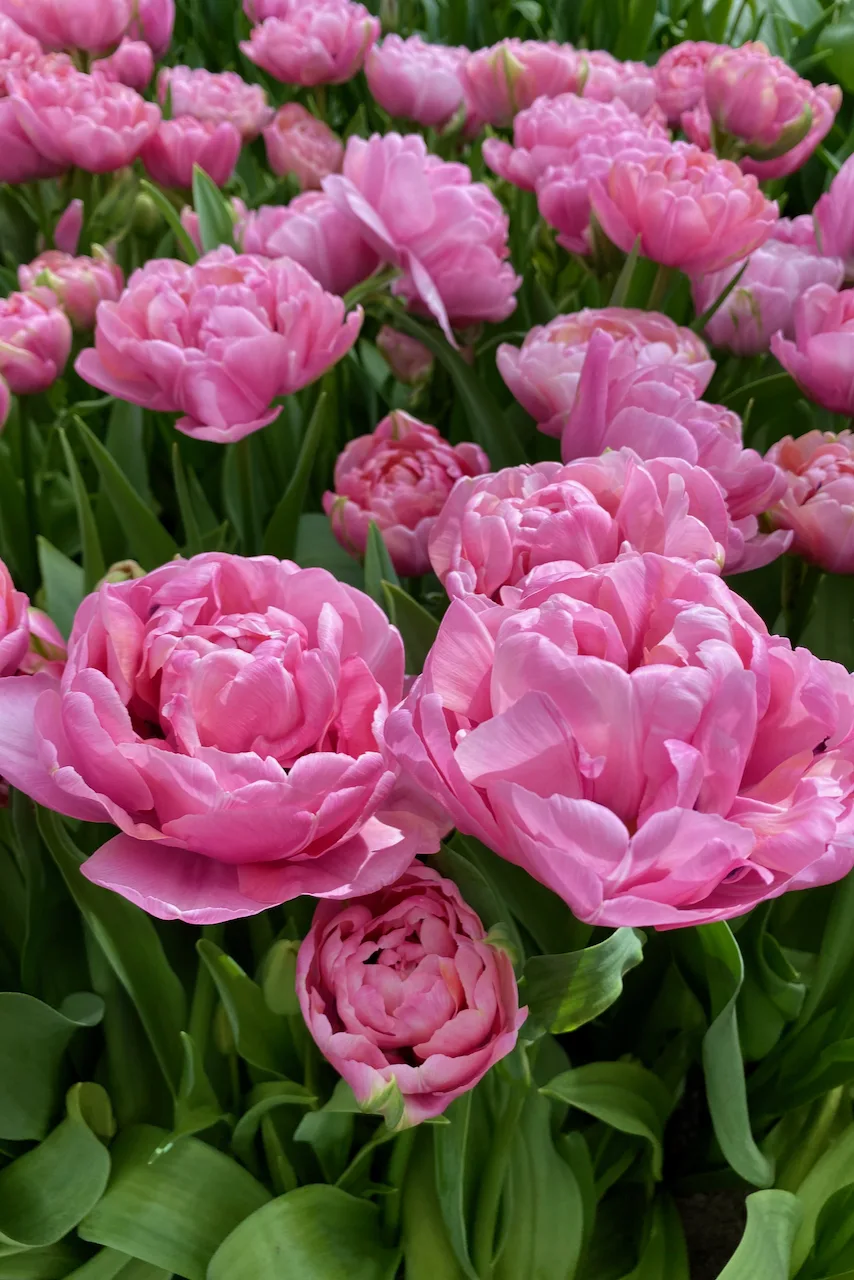
Here are the groups that are absolutely gorgeous to look at, but you’ll have to replant new bulbs over and over again every year.
Triumph tulips – Unfortunately, this is the largest group of tulips with the highest number of cultivars. They come in all sorts of hues and colors and have the classic cup-like tulip shape.
Viridiflora tulips – You’ll recognize them by their green, flame-like markings on the back of the petals that stretch from the base to the tip of the petal.
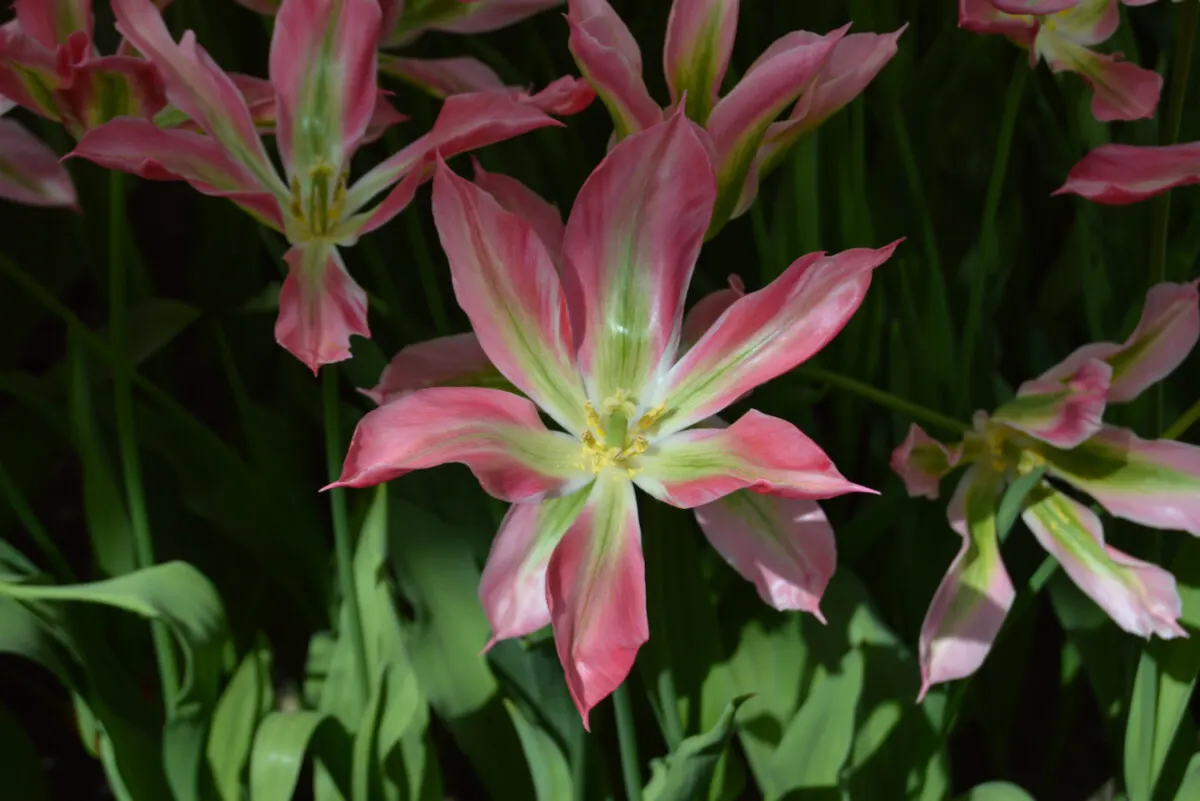
Rembrandt tulips – These tulips have been bred to resemble those affected by the Tulip Breaking Virus (TBV) during the Dutch Tulip Mania of the seventeenth century. They have colored feather-like streaks along their petals.
Parrot tulips – In these tulips, the swirls along the edges of the petals resemble the feathers of exotic birds. Parrot tulips are stunning, but unfortunately they won’t naturalize very well.
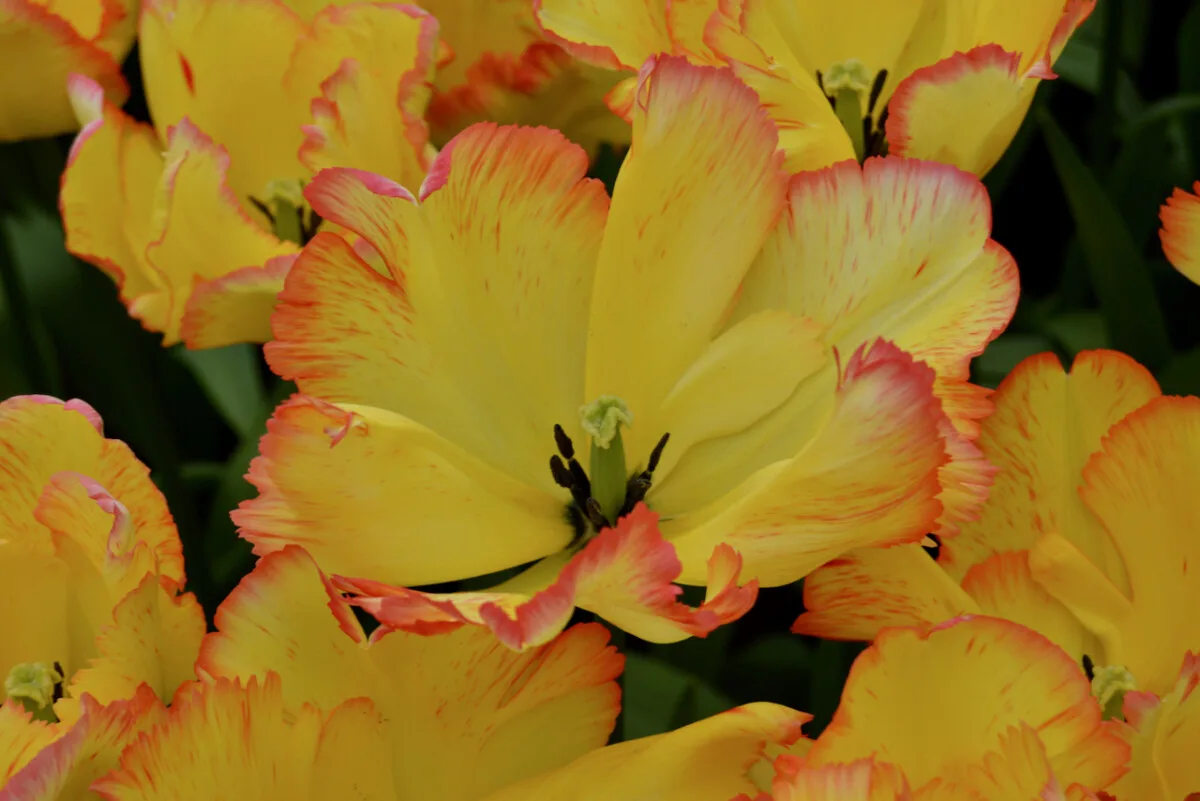
Fringed tulips – You may also know them as curly tulips or Crispa tulips. The petals have a frilly edge, often in a different color from the rest of the petal.
3 Tips to Increase the Chances of Your Tulips Perennializing
In addition to choosing the right bulbs for naturalizing, there are a few other factors that encourage tulips to come back year after year.
1. Right tulip in the right place.
The old gardening adage “the right plant in the right place” extends to planting bulbs as well. Species tulips, being closely related to their woodland ancestors, will perennialize differently from the other groups. Since in the wild species tulips grow in well-drained spots and at a rather shallow depth, replicating these conditions in our gardens will pay off. So planting them under a tree or hedge canopy, where they’ll be protected from heavy rain, will increase their chances of perennializing. You can also naturalize species tulips in grass in your lawn.
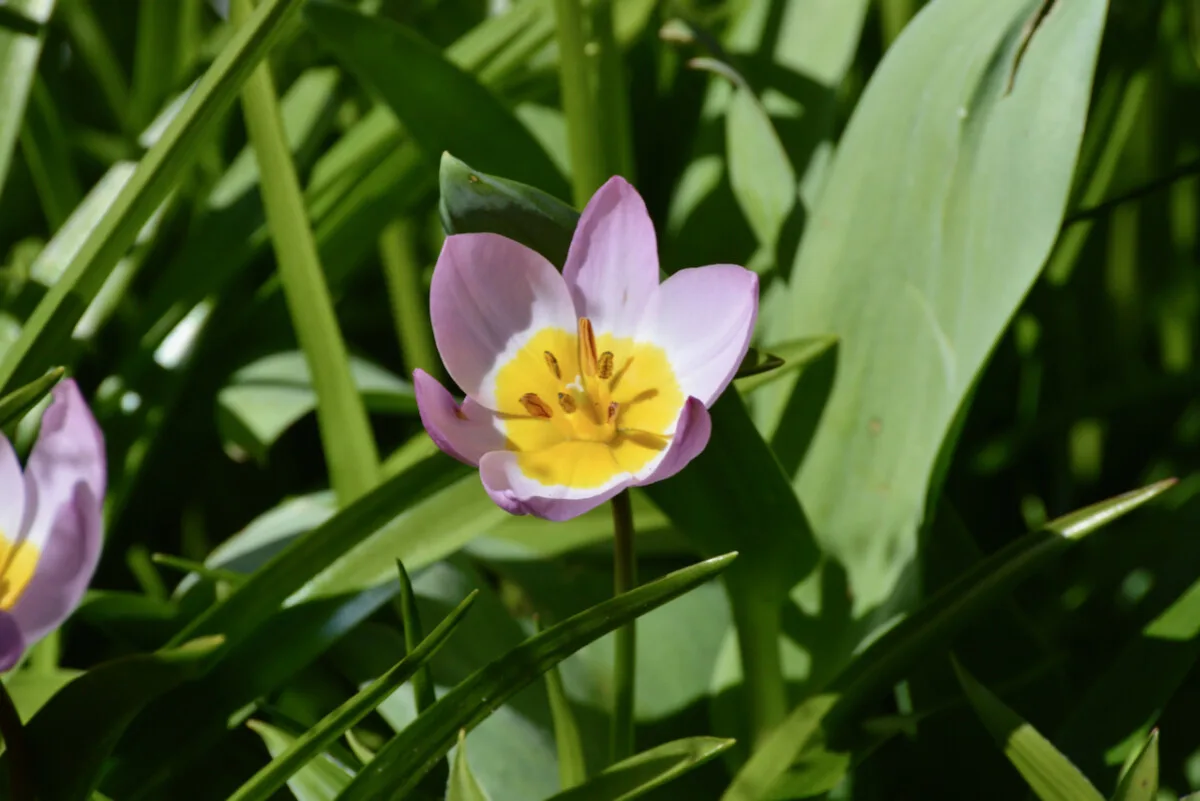
On the other hand, taller hybrids with larger blooms will need more sun and warmth in order to split their bulbs and come back every year. Planting them in free-draining soil in full sun will guarantee a tulip boomerang come next spring.
2. Don’t disturb perennial tulips in the off season.
This is something I struggle with in my small garden where you’ll often find several layers of plants growing (or resting) at the same time. Sometimes when I would dig to make room for perennials or to transplant veggie starters, I would unearth tulips left in the ground. Accidentally, I also damaged the bulbs with my spade several times.
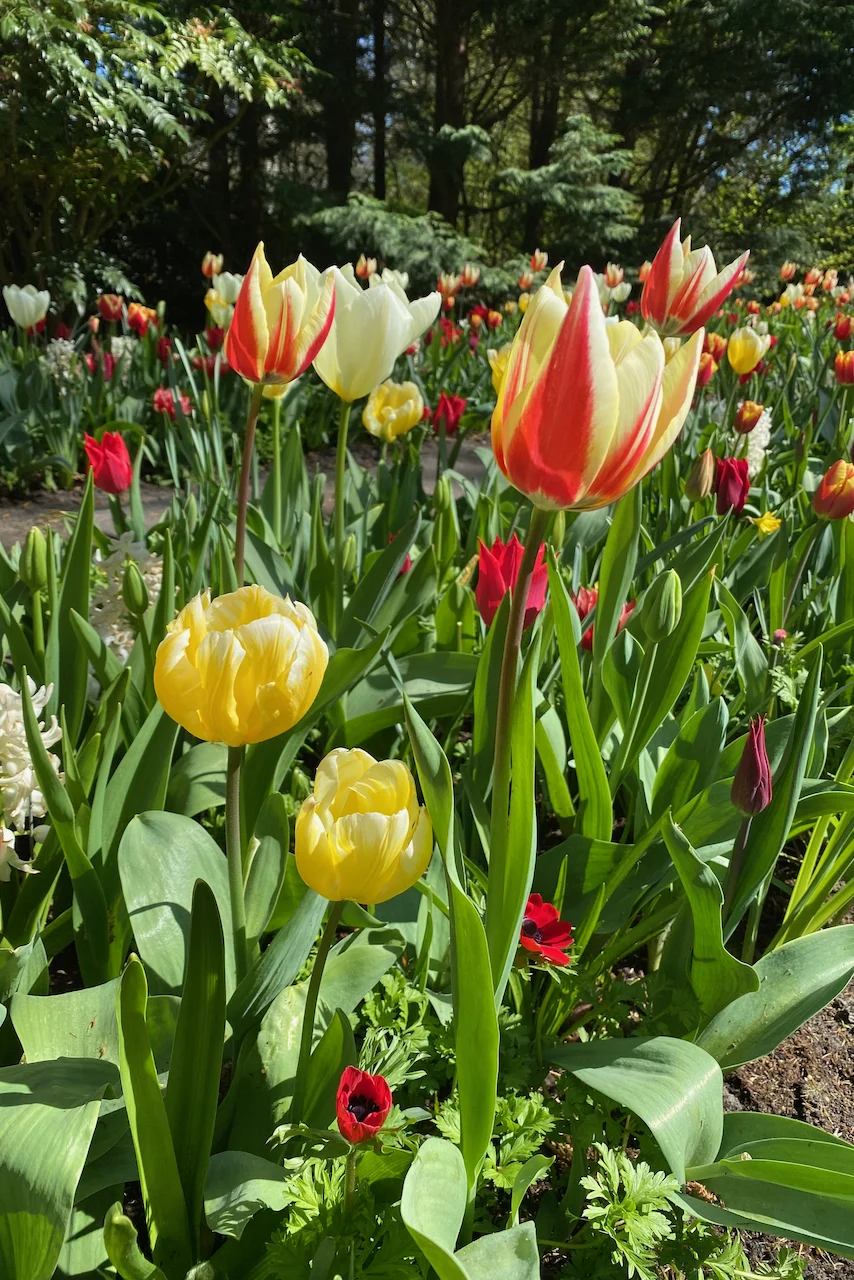
I know now it’s good practice to plant perennial tulips somewhere where they’re not likely to be disturbed in the off seasons. So I’ve started placing plant markers (little ‘happy rocks’ or small garden ornaments) to indicate that there are tulips resting underground.
3. Do not cut down the leaves when the tulips are done blooming.
For tulips to perennialize, the bulbs need to store enough energy to bloom the following year. This process happens with the help of the leaves. So if you want strong bulbs that will bloom again, it’s mandatory (yup, a strong word) to leave the leaves standing as long as possible once the flowers are gone. You can remove the leaves, one by one, once they’ve turned yellow. Here’s our total guide to post-blooming tulip care.
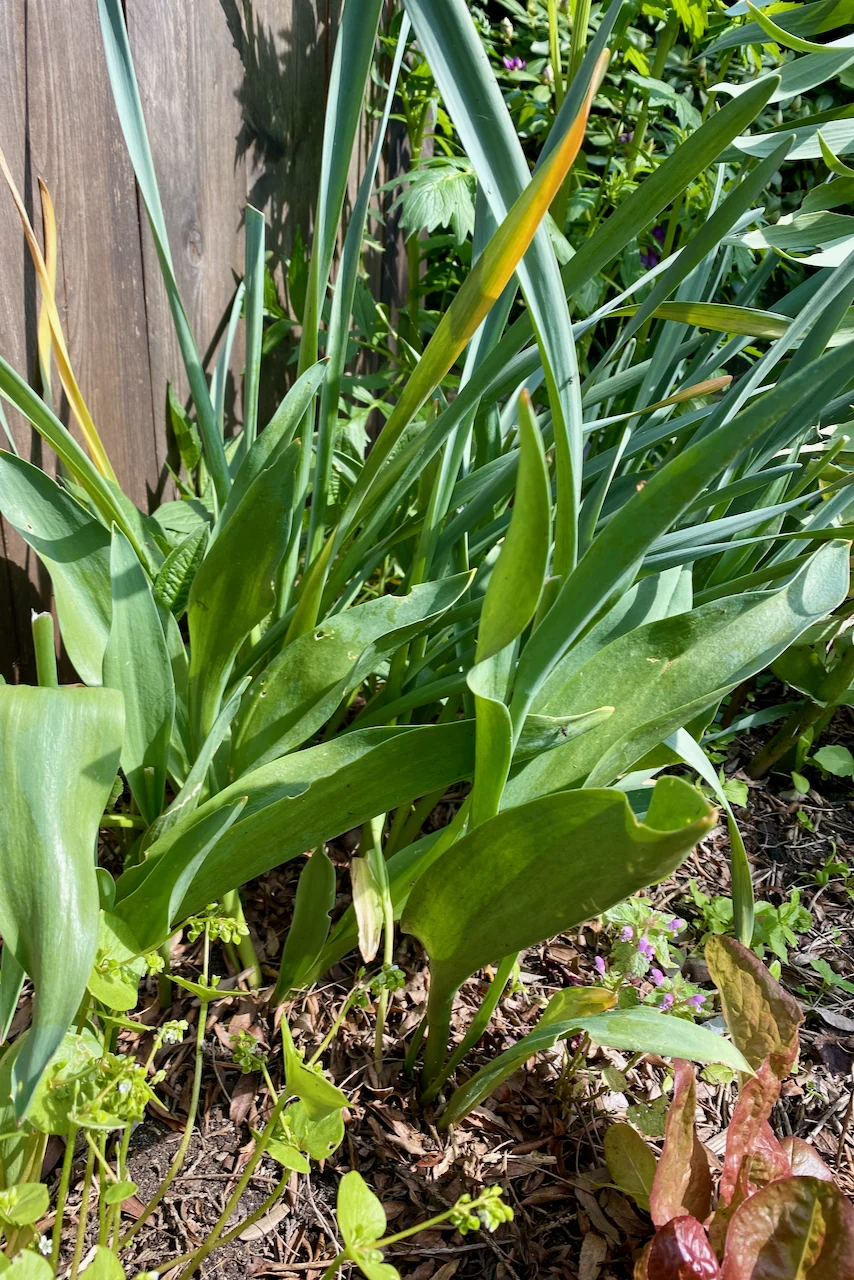
This is another reason why giving tulips their own corner in the garden is a good idea. You won’t need to pull out the leaves in order to make room for something else.
Overall, I understand that choosing tulips that naturalize might seem like you’re giving up on the big, boastful exemplars that only bloom once. But like most choices in gardening, and in life, it’s not an either/or scenario. I encourage you to give perennial tulips a try while also continuing to plant the one-bloom wonders. Transitioning to a more sustainable and budget-friendly garden is a slow affair that can still be filled with beautiful flowers along the way.

